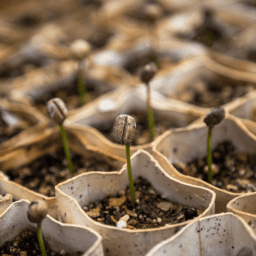
Brazil stands as a colossus in the global coffee industry, not just in terms of volume but also in the diversity of green coffee beans it produces. As the world’s largest coffee producer, Brazil’s contribution to the coffee market is unparalleled, with its vast landscapes nurturing a broad spectrum of coffee varieties.
The nation’s dominance is underpinned by a rich tapestry of beans ranging from the commonly grown low-altitude Arabica to the increasingly sought-after organic and Fair Trade certified varieties. This diversity positions Brazil as a crucial player in both the commercial and specialty coffee sectors, offering a palette of flavors that cater to a wide array of global tastes and preferences.
Historical Context
The journey of coffee in Brazil is a tale of transformation and triumph. From its humble beginnings with the clandestine introduction of coffee cuttings into Brazilian soil, Brazil’s coffee industry has evolved into a sprawling empire, commanding a significant share of the world’s coffee market.
This narrative is not just about the growth in numbers but also about Brazil’s efforts to rebrand its coffee from being a bulk commodity to a bearer of specialty coffees. The story is punctuated with milestones of innovation, quality improvement, and sustainability, reflecting Brazil’s enduring legacy as a coffee powerhouse and its pivotal role in shaping global coffee culture.
Types and Characteristics of Brazilian Coffee Beans
Brazil, renowned for its vast coffee production, cultivates several unique coffee bean varieties, each with distinct flavor profiles. Among them, Bourbon, Catuai, and Mundo Novo stand out for their exceptional qualities.
- Bourbon beans are celebrated for their sweetness and complexity, often presenting flavors that hint at chocolate and fruit. This variety comes in red and yellow, with each color variant bringing its own subtle taste differences to the cup.
- Catuai, a hybrid of Mundo Novo and Caturra, is versatile and resilient, producing coffees that are rich and nuanced, with a balance of sweetness and acidity that is highly valued by coffee enthusiasts.
- Mundo Novo, another widely cultivated variety, is a crossbreed that combines the best of Typica and Bourbon. It is prized for its ability to produce a smooth, full-bodied coffee with a complex flavor profile.
These varieties, among others, contribute to the rich tapestry of Brazilian coffee, offering a range of tastes from nutty and chocolatey to bright and fruity.
Coffee Producing Regions in Brazil
Brazil’s coffee production is geographically diverse, with several regions contributing to its status as the world’s leading coffee producer. Each region’s unique geography and climate imbue its coffee with distinct characteristics.
- Minas Gerais is perhaps the most significant coffee-producing state, known for regions like Sul de Minas, Cerrado de Minas, and the emerging Matas de Minas. These areas produce coffees that range from full-bodied and chocolatey to sweet and citrusy.
- São Paulo, another key region, contributes with high-quality beans, especially from the Mogiana area, known for its balanced and smooth coffees.
- Espírito Santo, largely producing Robusta, also plays a crucial role, especially in the specialty Robusta segment, offering beans with a stronger, more robust flavor.
These regions, among others, highlight the diversity and richness of Brazilian coffee, each adding its unique flavor profile to Brazil’s coffee portfolio.
Processing Methods
The method used to process coffee cherries significantly affects the flavor of the coffee. In Brazil, three primary methods are utilized:
- Natural Process (Dry): Coffee cherries are dried in the sun with their skins intact, contributing to a fuller body and sweeter, more complex flavors.
- Semi-Washed (Pulped Natural): Cherries have their skin removed, but the mucilage is left on during drying, offering a balance between body and acidity, with a cleaner profile than naturally processed beans.
- Fully Washed (Wet): Cherries are fully depulped, and the beans are washed before drying. This method emphasizes the coffee’s inherent acidity and clarity of flavor, producing a cleaner cup with pronounced characteristics.
Each processing method has its merits, influencing the final cup’s body, acidity, and overall flavor profile.
Brazil’s Coffee Grading System
Brazil employs a detailed grading system for its coffee, known as the Classificação Oficial Brasileira (COB). This system assesses coffee quality based on the number of defects in a sample, assigning a grade that helps in determining the coffee’s overall quality.
- Group I includes the highest quality Arabica beans with no defects and no off-flavors.
- Group II and Group III classify lower grades, including Robusta beans and those with more defects or off-flavors.
This grading system is integral to Brazil’s coffee industry, ensuring that coffees meet certain quality standards before they reach the market. It provides a framework for evaluating the vast quantities of coffee produced in the country, helping to maintain Brazil’s reputation for producing a wide range of coffee qualities, from everyday drinking coffees to high-end specialty beans.
Brazil’s Role in the Global Coffee Market
Brazil’s impact on the global coffee market is both vast and profound. As the world’s leading coffee producer, the country contributes significantly to the global coffee supply, exporting a wide array of green coffee beans to various parts of the world. Its main export markets include the United States, Europe, and Japan, where Brazilian coffee beans are valued for their diverse flavor profiles and consistent quality.
The sheer volume of coffee that Brazil produces ensures that it plays a pivotal role in setting global coffee prices and trends. The country’s ability to produce a large quantity of coffee, ranging from commodity to specialty grades, allows it to meet a broad spectrum of demand, reinforcing its status as a key player in the international coffee scene.
Sustainability and Certification
Sustainability in coffee farming has gained increasing importance in Brazil, reflecting a global trend towards more environmentally friendly and socially responsible practices. Brazilian coffee farmers and exporters are increasingly adopting certifications like Rainforest Alliance and UTZ to demonstrate their commitment to sustainable farming practices.
These certifications are not just markers of environmental stewardship but also ensure that the coffee is produced under fair labor conditions, contributing to the social and economic well-being of farming communities. Such practices and certifications help Brazilian coffee maintain its appeal in a market that values sustainability as much as quality and flavor.
Roasting Brazilian Green Coffee
Roasting Brazilian green coffee beans requires an understanding of the diverse flavor profiles offered by the different regions of Brazil. Given the variety, there is no one-size-fits-all approach to roasting these beans. For instance, beans from the Minas Gerais region, known for their nutty and chocolatey notes, might benefit from a medium roast to enhance these characteristics.
Conversely, beans with more fruity and acidic notes, such as those from Espírito Santo, could be lightly roasted to preserve their delicate flavors. Roasters should consider starting with sample roasting and cupping to determine the optimal roast profile for each Brazilian bean variety, thereby ensuring that the unique qualities of each bean are highlighted.
Brewing Tips and Techniques
Brewing Brazilian coffee to capture its unique flavor characteristics involves paying attention to grind size, water temperature, and brewing method. For beans with a chocolatey and nutty profile, a French press or espresso method can enhance these flavors, using a medium to fine grind.
For more acidic and fruity beans, a pour-over or Aeropress with a slightly coarser grind and cooler water temperature can help to highlight these brighter notes. Experimentation with different brewing methods and adjustments to the coffee-to-water ratio can also lead to a more personalized coffee experience, allowing the drinker to fully appreciate the rich diversity of flavors that Brazilian coffees have to offer.
FAQs
How should Brazilian green coffee beans be stored to maintain freshness?
Brazilian green coffee beans should be stored in a cool, dark place, away from direct sunlight and moisture. Using airtight containers can help preserve their freshness longer.
Can I roast Brazilian green coffee beans at home, and if so, how?
Yes, you can roast Brazilian green coffee beans at home using a home roaster or even a simple pan on the stove. Start with a medium heat and keep the beans moving to avoid burning. Listen for the “first crack” as a sign that roasting is underway, and adjust the time based on desired roast level.
Does the type of Brazilian bean affect the flavor of the coffee?
Absolutely. The variety of the bean (e.g., Bourbon, Catuai, Mundo Novo) and its processing method (natural, semi-washed, fully washed) significantly impact the flavor profile, ranging from nutty and chocolatey to fruity and bright.
Final Thoughts
In conclusion, Brazilian green coffee beans represent a cornerstone of the global coffee industry, contributing a wide array of flavors and qualities that cater to diverse tastes and preferences. From the sprawling plantations of Minas Gerais to the sustainable practices underscored by certifications, Brazilian coffee continues to enchant the world.
Whether through the rich, detailed process of roasting and brewing or the meticulous care in cultivation and processing, the essence of Brazilian coffee beans brings a unique and cherished experience to coffee enthusiasts worldwide.









